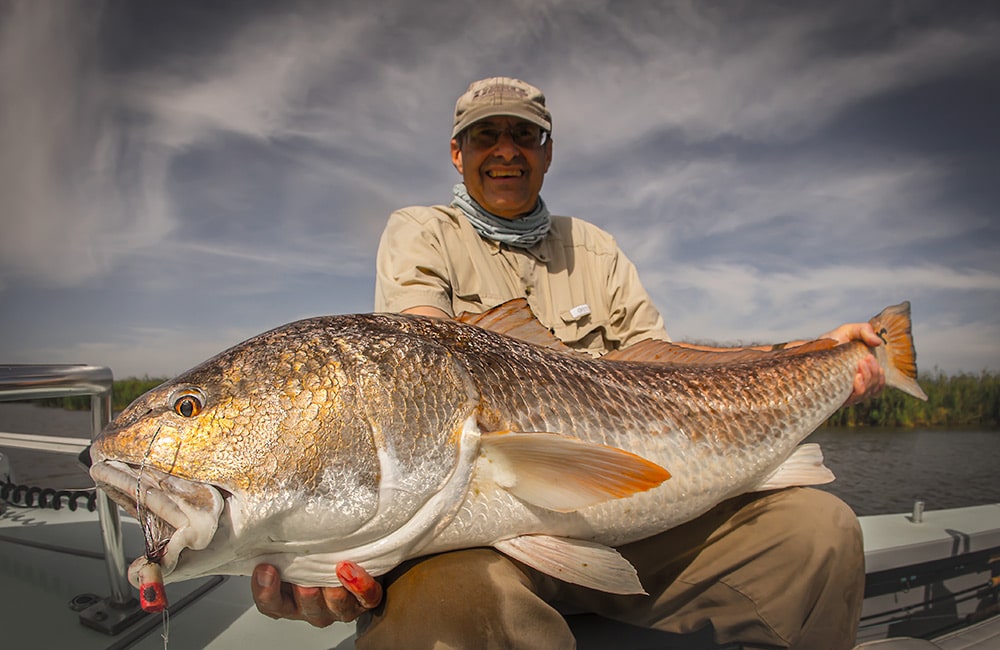
Louisiana isn’t the only place to catch monster redfish on fly, but the abundance of big fish and habitat conducive to sight fishing for them make Cajun waters a mecca for fly rodders intent on tangling with specimens often weighing upwards of 40 pounds.
Certainly, the number of shots at trophy reds that fly anglers enjoy in Louisiana on a daily basis is astounding, and since most of those shots come in less than 2 feet of water, usually without another boat in sight, it’s easy to understand this premier fishery’s meteoric increase in popularity in recent years.
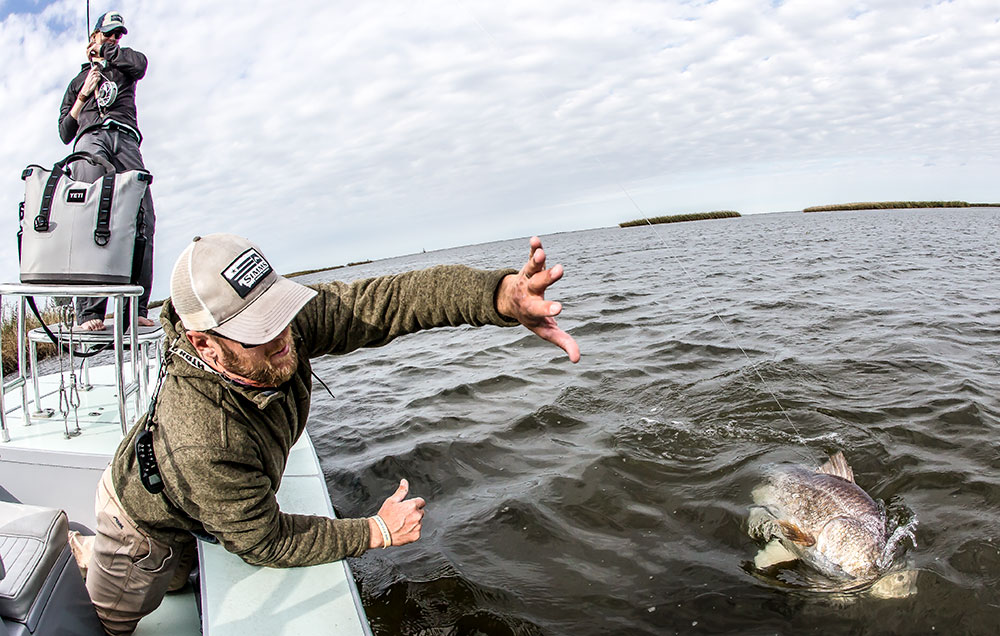
Peak Times to Catch Bull Redfish
Many anglers are under the erroneous impression that fly fishing for bull reds in Louisiana is limited to the fall and winter months. But I’ve been fishing these waters since the early 2000s, while attending Tulane University, and have been guiding anglers since 2008, and I know from experience that you can catch bulls 365 days a year. If you understand the seasonal patterns and learn what to look for, you’ll even catch them on the hottest and coldest days.
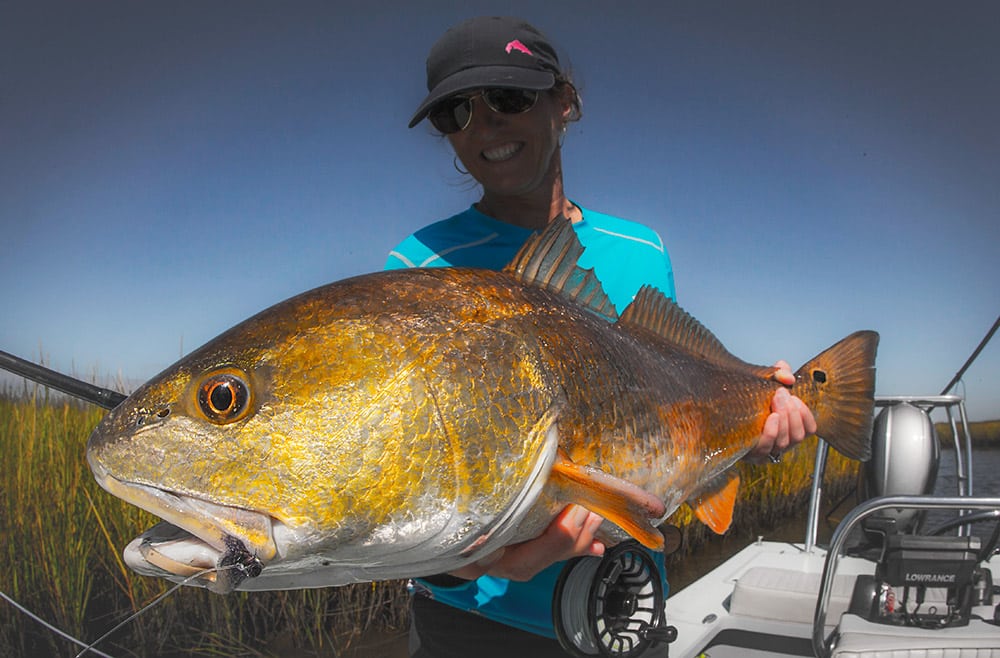
Redfish don’t typically migrate long distances like tarpon, but they do move around to different zones throughout the year. Louisiana’s huge population of slot-size fish (legal keepers) resides primarily in the interior marshes, where they find shelter and food, and grow to sexual maturity before venturing out to the big bays and join other adult reds in large groups for spawning from late summer through early fall.
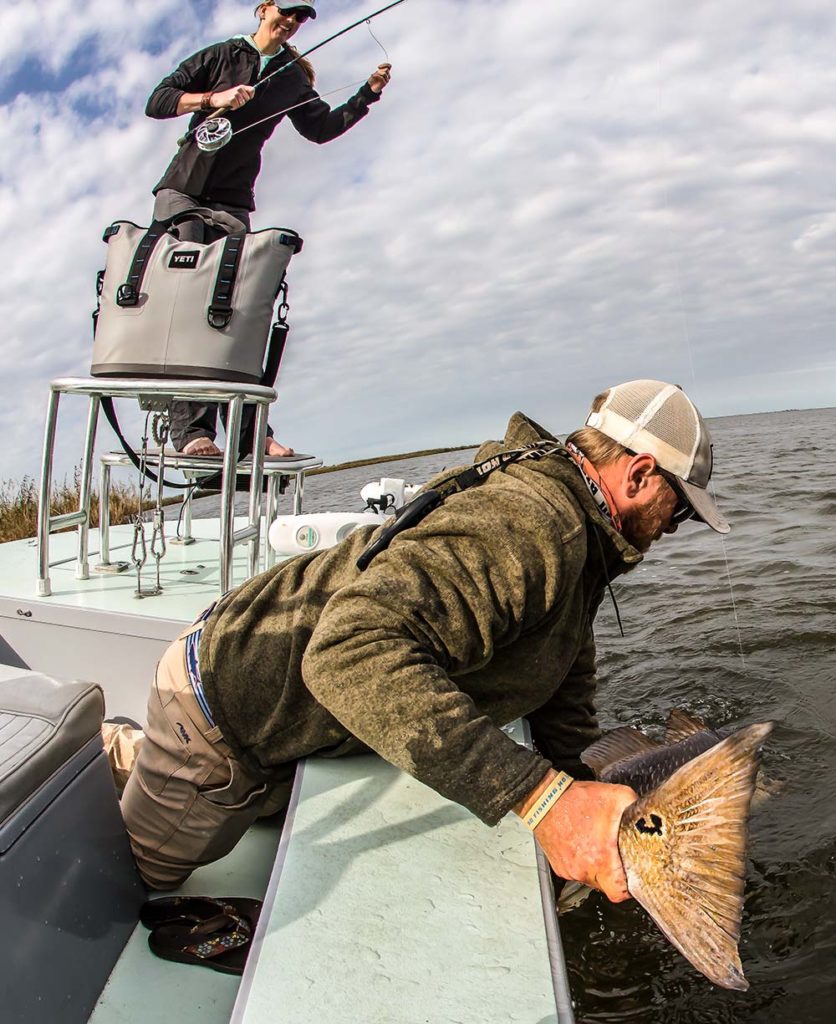
The bigger, mature bull redfish congregate in open waters along the outskirts of the marshes during the warmer months, so that’s when you should concentrate your efforts along outer islands, beaches and open bays, where these bulls will gather to feed on schools of baitfish, mostly pogies and mullet, in order to fatten up before spawning, which begins in late summer and goes on until the water temperature drops below 65 degrees. During the warmer months, if you find the bait, you typically find the fish.
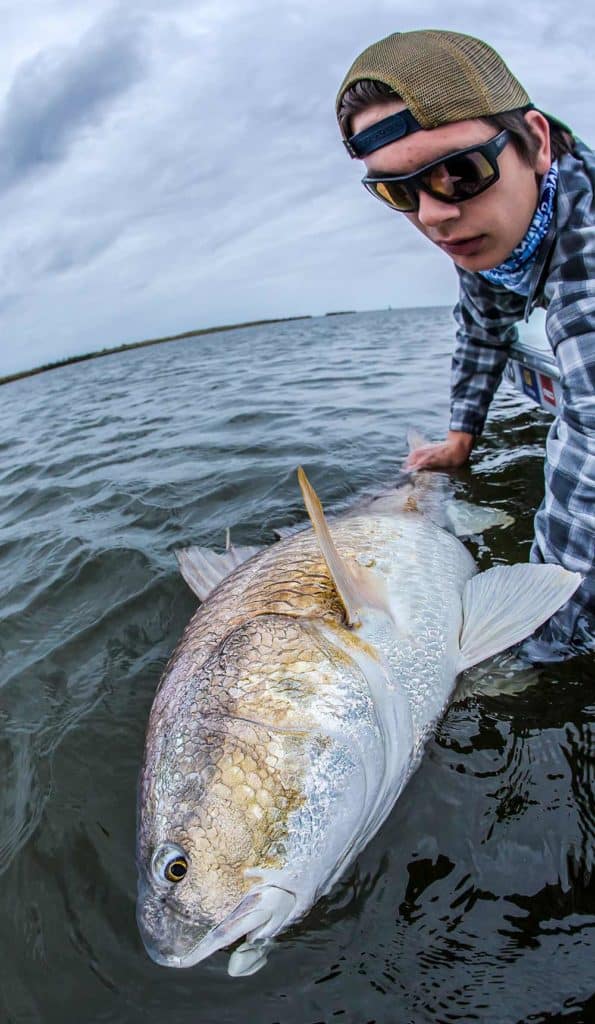
The transition from open water to the shallow ponds occurs as cold fronts arrive and water temps drop. This triggers the bulls to stop spawning and move to the interior bays and ponds adjacent to the open water they inhabit during the warmer months. When temperatures cool down, the bulls start invading shallow ponds and their diet changes. The majority of baitfish leave then, so the big reds look for crabs and shrimp on the same dark mud flats that also keep them warm throughout the winter.
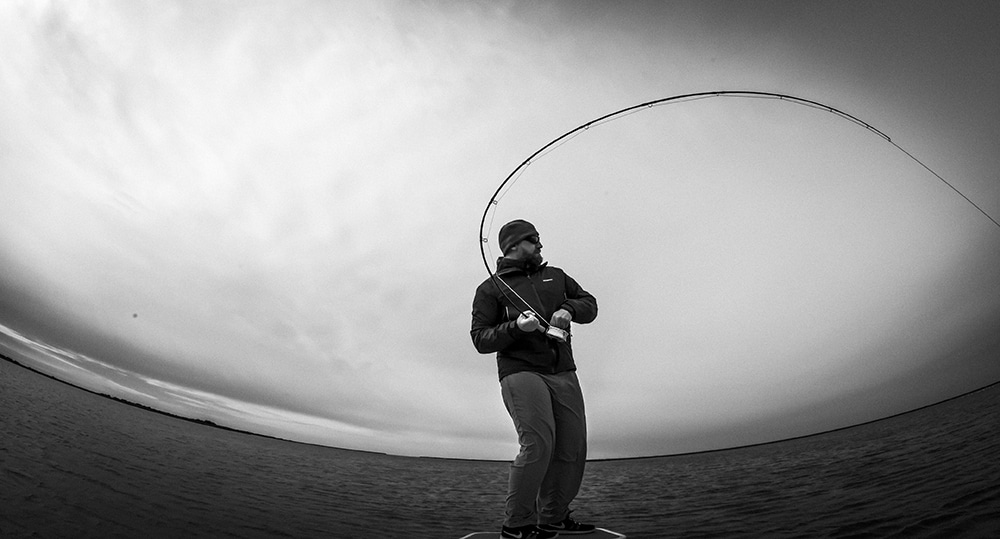
Search Google Maps to Find Fishing Spots
Looking at a map of Louisiana — with its maze of bays, lakes, ponds and bayous — for the first time can be daunting. Thinking of all the mud flats, sandbars, oyster bars and other submerged structures that you can’t see certainly is intimidating. But learning what to look for will help you tremendously, and Google Earth is a great tool for scouting, as it lets you survey the area you intend to fish from above.
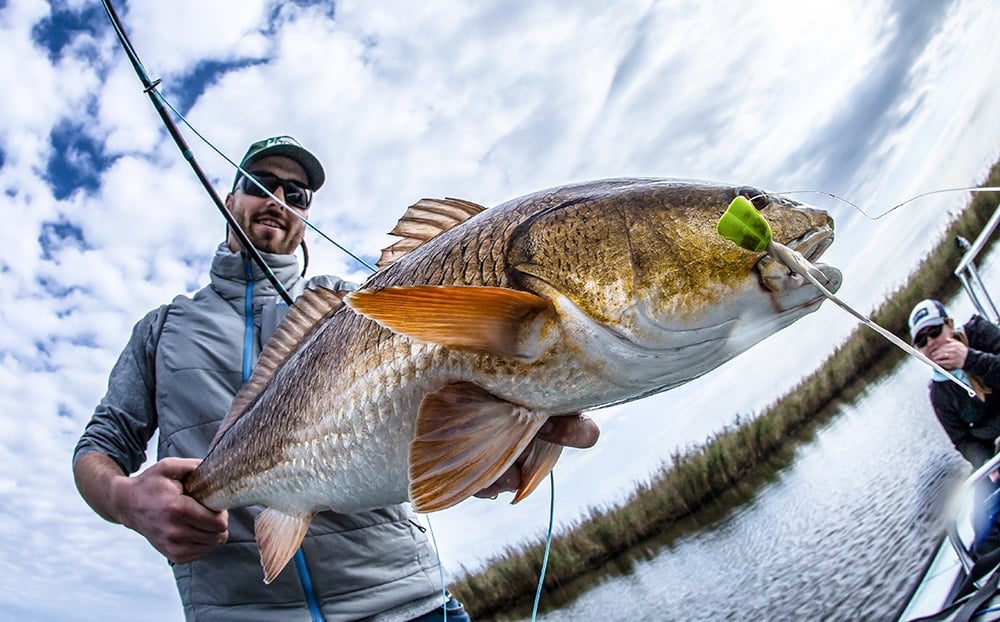
During the cooler months, search for shallow ponds in close proximity to deeper water. The redfish use the deeper water as a highway to travel into the interior marshes. When cold fronts hit and north winds drop the water levels, the bulls fall off the flats and use nearby deep holes as safe staging zones so they don’t get stranded on the exposed mud flats. When the weather settles, the big reds move back out of these holes and return to the shallows.
If you find such deeper areas with a good combination of oysters and dark mud on the bottom, chances are you will get into some big reds.
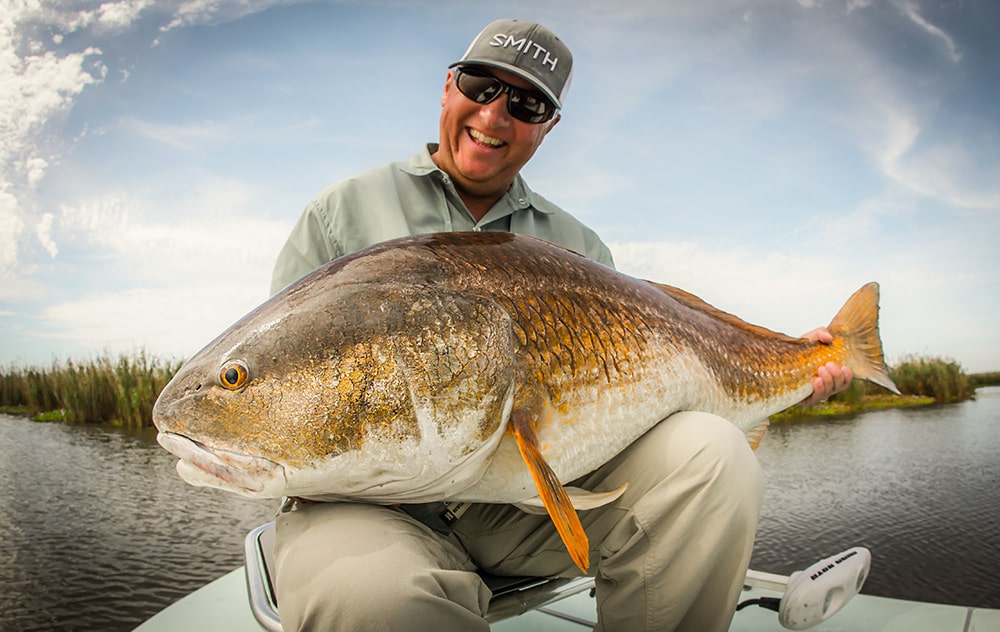
Sight-Fishing for Bull Redfish in Louisiana
Bull redfish don’t require long casts of 80 feet or more. Mosts casts are 35 feet or less, but those short, accurate casts are often the toughest. So work on your short game ahead of time. Get out in the yard and practice quick 20-foot casts, trying to put the fly on a plate. I tell my anglers to be aggressive and get the fish to see the fly before they feel the boat. Hit ‘em between the eyes and your hookup ratio will greatly improve.
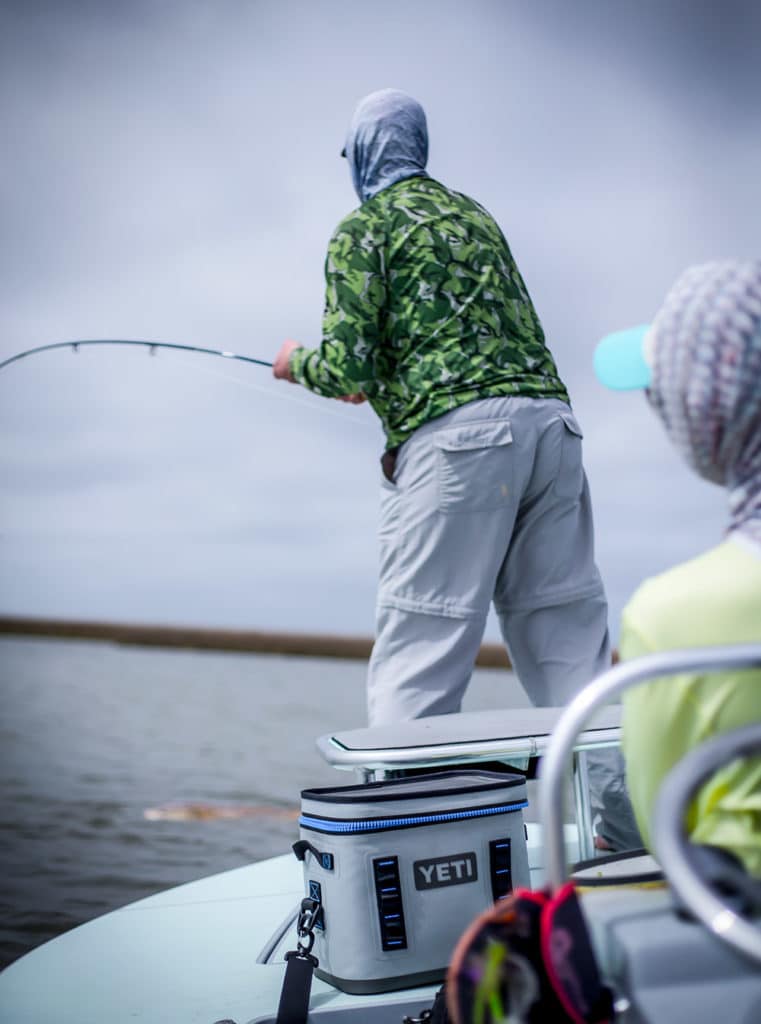
Fly Fishing Tackle and Lines for Bull Redfish
An 8- to 10-weight fly rod with a matching reel and a weight-forward, floating line like a redfish taper is the weapon of choice. Keep in mind that 9- and 10-weight rods help you throw bigger flies with ease. I’m partial to G. Loomis and carry NRX and Asquith 9-weights, both paired with Nautilus CCFX2 8-10 reels loaded with Airflo Ridge floating redfish taper or Ridge Tropical Punch taper.
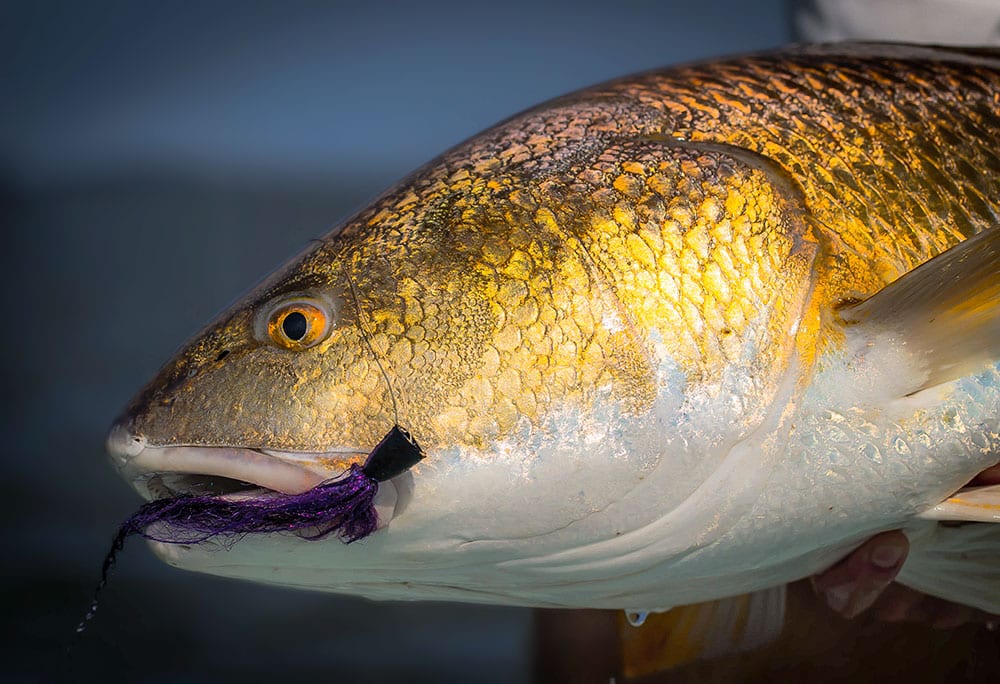
When it comes to fly patterns, redfish aren’t picky and don’t require matching the hatch. I throw poppers and big, light-colored streamers when its warm, and dark-colored streamers with lead eyes as the water temp drops.









